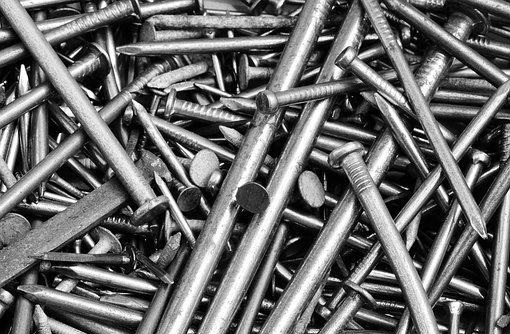- Home
- Blog
- Screws & Fixings
- When Would You Use Bullet Head Nails?
When Would You Use Bullet Head Nails?

When it comes to construction projects, it is vital that you use the right equipment from the very beginning to avoid damaging segments and tools during the assembly process.
It is perhaps surprising to those unfamiliar with DIY just how many types of nails there are to choose from, with each having a particular purpose and advantage over the others.
One example is the bullet head nail. Like all types of fasteners, bullet head nails are effective at connecting wood, metal, and other materials used in construction. They are often considered one of the most popular and widely-used nails due to their simplicity and versatility.
This article will explore exactly what a bullet head nail is and its primary purposes. It will also highlight some alternative nails you could use instead of bullet head nails.
What Are Bullet Head Nails?
A bullet head nail is simplistic in its design. Its head is often smaller than other types of nails, usually made from galvanised stainless steel with a diamond point tip. They are typically designed with a plain shank and can vary in length depending on your project.
They are named as they are because their intended purpose is to punch into timber or metal straight flush without leaving a significant visual impact on the material. For this reason, they are often used during the finishing phase of the project rather than the initial heavy assembly.
When Are Bullet Head Nails Mainly Used?
Bullet head nails are noted for their versatility and can be used for various projects and purposes.
Longer-length nails are generally used for framing, cabinet work, wood panelling, and furniture assembly.
Bullet head nails with shorter lengths are more suitable for finer woodworking projects. Their flat head design allows them to be punched below the level of the material, meaning they can be covered with wood putty or something similar to hide them entirely from view.
How Should I Insert a Bullet Head Nail?
As with most fixings, it is essential to try and get it into place the first time, as having to repeat the process can cause damage to both the nail and the material.
When nailing bullet head nails down into your timber, drive it straight flush into the wood. If it ends up going in at an angle, it might damage the timber by weakening it while also ruining the nail. You should also avoid brushing the wood.
What Length and Size Nail Should I Use?
As mentioned before, the most suitable length of nails depends on the type of project you want to complete. The longer the nail, the more secure the fixing.
Bullet head nails come in a variety of sizes and dimensions. The smallest nail generally has a head diameter of around 2mm, with a shaft length of 40mm, though the following dimensions are also available:
- 2.5mm x 50mm
- 2.8mm x 65mm
- 3.15mm x 75mm
- 3.75mm x 75mm
- 4.5mm x 100mm
- 5.6mm x 125mm
- 5.6mm x 150mm
Other Types of Nails
While bullet head nails are an effective choice for most types of carpentry and woodworking projects, they are by no means the only type of nail out there. Here is a selection of other types of nails that you may wish to choose from.
Common Nails
These nails have a lot in common with the bullet head variety. They are similar in terms of dimensions and purposes, though they usually have slightly broader heads than bullet head nails.
Box Nails
Box nails will also have slightly wider heads than bullet head nails but narrower shanks. This means there is less chance of the wood splitting as the nail is inserted. However, this does make box nails weaker than bullet head nails, so you shouldn't use them for larger projects.
Sinker Nails
Like bullet head nails, they are designed to be driven flush into the material. However, they usually have a checkered head which can help prevent the nail from slipping off during the insertion. Bullet head nails are better suited for outdoor projects as sinker nails can suffer from corrosion.
Deck Nails
Deck nails will usually have the same checkered pattern on the head and are resistant to corrosion. They are perhaps slightly better suited to outdoor tasks as they usually have a thicker shaft to help keep the nail in place.
Finishing Nails
These types of nails are best used for fine woodwork and carpentry. They generally have even smaller heads than bullet head nails so that they can be concealed easily once installed. They also have narrower shafts to minimise the risk of damaging the timber.
Drywall Nails
Drywall nails have much wider heads than bullet head nails and thicker shafts, making them better suited to more strenuous fastenings. They also have longer diamond points to drive them easily into a surface.
Final Thoughts
Bullet head nails are versatile nails that you can use for all types of construction projects. However, each type of nail has distinct advantages and disadvantages over others, so do your research first to ensure that you choose the exact nail you will require for your project.
At Trade Warehouse, we have provided a vast range of DIY products and supplies to our customers across Australia for over ten years. Our low prices and first-class delivery service have meant that customers return to us year after year.
Contact us today if you have any questions or queries. You can also sign up for our newsletter to receive 10% off your first order!

